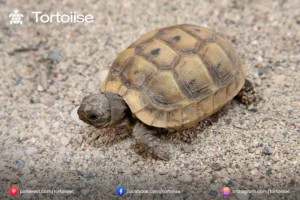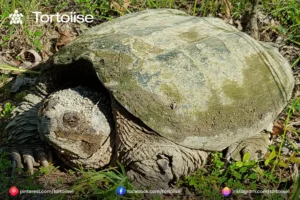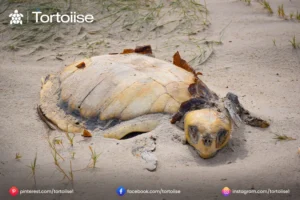How to know if a tortoise is dead
The most effective method is to be aware if a tortoise is dead.
Tortoises are exceptional animals that can frequently seem dead because of their inability to burn calories, times of latency, and capacity to brumate (a hibernation-like state). It very well may be troubling so that a proprietor might be able to see their tortoise still or inert; however, deciding if it is dead or basically lethargic requires cautious perception and a few explicit checks. This guide will walk you through the moves toward recognizing assuming that your tortoise is dead, torpid, or unwell.

1. Grasp Typical Tortoise Conduct
Prior to expecting the most obviously awful, understanding turtle behavior is fundamental.
Times of Inertia
Tortoises can stay still for quite a long time or even days, particularly during colder months when they hibernate.
2. Brumation
During brumation, tortoise diminish their metabolic activity to endure lower temperatures. They might quit eating, drinking, and moving, causing them to seem inert.
In the event that it’s brumation season (normally pre-winter to late winter), your tortoise may basically be in a lethargic state.
Search for indications of something going on under the surface.
Relaxing
Breathing can be unpretentious in a a tortoise. This is the way to check:
Hold a plume or piece of delicate tissue close to the nostrils to identify wind current.
Notice the throat region for musical developments, demonstrating relaxation.
Eye Development
Tenderly focus a light close to the turtle’s eyes. A sound turtle might flicker or show some response.
Appendage Reaction
Contact the legs or tail softly. A living tortoise generally pulls its appendages once more into the shell or shows obstruction when moved.
3. Actual Assessment
Shell Condition
A living turtle’s shell ought to feel firm and flawless.
Staining, breaks, or a delicate, rubbery surface can show serious medical problems or passing.
Body Condition
Look at the eyes and mouth for dampness. Dry, indented eyes or a vast mouth are indications of death or difficult disease.
Disintegration starts rapidly in expired creatures, so a foul smell or swelling is an obvious sign.

4. Play out a Delicate Water Test
On the off chance that different techniques are uncertain, a water test can help decide whether the tortoise is alive.
Fill a shallow compartment with tepid water. The water level ought to just arrive at the lower part of the tortoise shell to avoid suffocation.
Place the tortoise tenderly in the water.
Notice: A living tortoise might flicker, move its legs, or try to lift its head over the water.
Assuming the tortoise shows no development or reaction following a few minutes, it might have died.
5.Think about Natural Element
Temperature
Tortoises are ectothermic and depend on outside temperatures to control their body heat. A cool climate can cause laziness or profound torpidity. Continuously warm the walled-in area to its standard reach (75-85°F) and screen for movement.
Ongoing Movement
Consider the tortoise’s new way of behaving. When was the last time it ate or drank?
Has it been dynamic or uncommonly lazy?
On the off chance that the turtle has been up for a lengthy period, it could be an ideal opportunity to consult a veterinarian.
6. Look for Veterinary Affirmation
If you can’t decide if your tortoise is alive, contact a reptile veterinarian. They can perform tests, like tuning in for a heartbeat, really taking a look at reflexes, or leading imaging, to affirm the turtle’s condition.
Managing a Departed Tortoise
Assuming your tortoise has died, make the accompanying strides.
Decide the Reason
On the off chance that the reason for death is obscure, think about a necropsy (creature post-mortem examination) to comprehend what occurred.
Deferential Taking care of
Wear gloves while dealing with the tortoise to keep away from contact with unsafe microorganisms.
Entombment or Incineration
Check neighborhood regulations with respect to the removal of pets. Entombment in your yard or incineration through a pet help are normal choices.

End
Tortoises can seem dead in light of multiple factors, including brumation, disease, or ecological elements. Cautious perception and assessment can assist you in deciding their condition. If all else fails, consult a veterinarian for proficient direction.
By understanding your tortoise’s typical way of behaving and needs, you can give appropriate consideration and address any worries quickly, guaranteeing their prosperity—or respecting their memory, assuming they’ve passed on.
